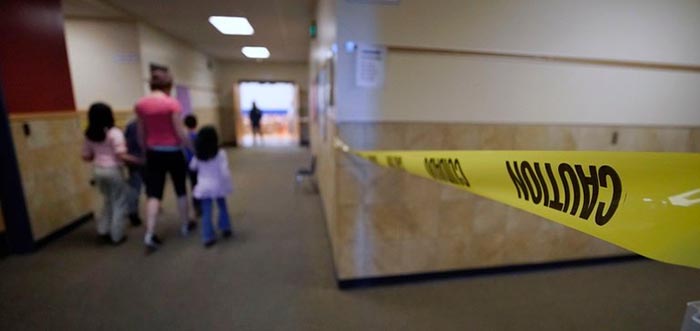
From K-12 Dive
By Kara Arundel
March 17, 2022
Dive Brief:
Nearly half of teachers and a third of administrators said they are planning or want to quit or transfer jobs due to concerns about school climate and safety, according to a survey conducted July 2020-June 2021 by the American Psychological Association and released Thursday.
Among the reasons school employees cited for their feelings were high stress due to feeling unsafe and a lack of supportive work environment. A third of teachers reported at least one incident of verbal harassment or a threat of violence from a student, and 42% of administrators said they had been harassed or threatened by a parent.
In response to the survey findings, the APA Task Force on Violence Against Educators and School Personnel issued a report with several recommendations, including prioritizing the mental health of staff and students, considering educators’ voices in decision-making, and improving professional development for staff to better respond to social-emotional needs of students, other educators and themselves.
Dive Insight:
A layering of stressful situations for school personnel — including school safety concerns, pandemic-inducing trauma, racial injustice, disrespect for educators and other worries — is causing a “pressure cooker” atmosphere in the nation’s schools, said task force member Ron Avi Astor, a professor of social welfare and education at the University of California, Los Angeles, who has researched school culture and violence.
“Schools were and still are a battleground,” and school personnel need to feel their safety is being protected, Astor said. “COVID is symbolic of all these larger cultural layers that filter into every classroom, every school in the country, and that’s why we’re seeing it, we believe, kind of peak now.”
The survey asked nearly 15,000 pre-K-12 teachers, administrators, staff, school psychologists and social workers nationwide about their experience with threats of violence, including verbal harassment, threats and cyberbullying from students, parents or guardians, colleagues and administrators, as well as physical violence from students.
Here’s what participants shared:
Physical violence from students. Some 22% of school staff, including instructional aides and school resource officers, reported being physically assaulted by a student. Other school personnel reported physical violence from students as well: 18% of school psychologists, 15% of school administrators and 14% of teachers. Survey respondents said physical violence committed by students occurred frequently in the Midwest (19%) and less frequently in the Northeast (12%).
Desire to quit or transfer. More teachers reported wanting to quit (43%) than transfer (26%). Administrators also said they were leaning toward quitting (27%) rather than transferring (13%). School psychologists,social workers and other staff likewise indicated a higher desire for quitting over transferring. In a nationally representative survey about school responses to the pandemic conducted by the National Center for Education Statistics, nearly half (44%) of public schools reported having full- or part-time teacher vacancies.
Threats by school levels. Middle schools presented the highest danger, with 37% of survey participants reporting verbal and threatening violence from middle-graders and 30% reporting it from parents. In high school, there was also a notably high rate, with 32% of respondents reporting verbal or threatening violence from students and 25% from parents.
Private and public school differences. In public schools, verbal or threatening violence from students was the most frequent type of violence (30%), followed by verbal or threatening violence from parents (27%). In private schools, however, the pattern was reversed: Verbal or threatening violence from parents (26%) occurred most frequently, followed by verbal and threatening violence from students (19%). More than 94% of those surveyed were from public schools.
The APA survey asked participants about solutions, and excerpts from the responses show school personnel suggesting a variety of strategies including policies and interventions to respond to students behaviors, culturally responsive techniques to engage students and families, and adding more staff.
Astor said what’s unique about this survey compared to earlier surveys about school safety is that the task force was deliberate in getting feedback from all school personnel, including janitors, bus drivers, secretaries and other non-instructional staff, in addition to teachers and administrators.
The task force report also offers strategies for supporting school personnel and student mental health and well-being, including encouraging school-based and community partnerships focusing on mental health supports and trauma-informed practices.
The task force advises including educators in discussions and decision-making around discipline, school climate, staffing and more. Other recommendations include offering programming about interventions for preventing violence, building positive school climates and strengthening teacher-parent collaboration.
Legislative solutions such as additional funding for teacher training programs and school-based mental health services could also improve conditions for school personnel and educators, according to a task force list of recommended initiatives.
“It requires a little bit of a different philosophy,” Astor said. “It’s just not more things. It requires it to be organized in a way where there’s a clear understanding that you can’t get children’s good mental health without making sure that the adults around them — I mean all the adults, the bus driver, the crossing guard — are also supported and cared for. You can’t do it. It’s not possible.”
Photo: George Frey via Getty Images
Read this and other stories at K-12 Dive

